What a perfect day to be outdoors, this past Thursday! Warm and sunny at last, after so many cold rainy days. My friend Sue Pierce had been seeking for weeks, hoping to find the ephemeral Spring Beauty (Claytonia caroliniana) close to her home in Hudson Falls, to no avail. But a friend had told her of a trail in Moreau Lake State Park where some had been found, so off we went to seek them out. Did we find Spring Beauty? We sure did! (See the photo below.) And we also found tons of other gorgeous spring wildflowers as well, at this and two other sites we stopped at on this same day.
We also found signs that this was likely a really rich site for wildflowers. One of those signs was the abundant presence of Maidenhair Fern, a fern that can only thrive where the soil is rich in lime.
Two-leaved Miterwort (Mitella diphylla) is another plant that needs a dark background if you want the teeny-tiny, delicately fringed flowers to be seen to best advantage. This downed tree log did the trick today, in the dry creekbed where these dainty flowers were blooming.
The bright sun and deeply shaded background also brought the flowers of Two-leaved Toothwort (Cardamine diphylla) into sharp focus.
We found many, many of some finely cut leaves on this wooded site, and we recognized them as belonging to a species of Dicentra. But we weren't sure whether they belonged to Squirrel Corn (D. canadensis) or Dutchman's Breeches (D. cucullaria). But then I found these pantaloon-shaped, rather wizened remains of a bloom, and that clinched the Dutchman's Breeches ID. (The flowers of Squirrel Corn are more heart-shaped.)
And there were VIOLETS! Scads of violets, of several different species. These large, yellow-centered, purple-budded, bright-white blooms of Canada Violet (Viola canadensis) were another sign that we were in a rich woods, for Canada Violets are found only where the soil is rich in lime.
I have much less confidence determining the species of other violets we found. For example, what species is this furry-stemmed, white-throated and white-spurred blue violet? I know that several species of blue violets have been lumped together as Viola sororia, but this one sure looked unique. I wonder if it could be a hybrid?
These pretty white violets had ruddy stems. Does that mean they would be Viola pallens? We have several species of small white violets, and I am especially inept in distinguishing them. Opinions welcomed!
Here was another small white violet that grew along the trail, but these had green stems, not ruddy ones. Would that make them Viola blanda? I sure wish I knew!
After spending the morning exploring that Spring Beauty site, we headed next along Spier Falls Road where it follows the Hudson River, on our way to a swampy spot atop Mt. McGregor. But first, we stopped along the way, where jagged cliffs rise directly from the road. Here, small springs seep down the rocks and soak into the gorgeous green mosses that cling to the ledges. And when the Early Saxifrage (Micranthes virginiensis) that sprouts from these mosses comes into bloom, the multitudes of their flowers transform these jagged rocks into a spectacular rock garden.
Here's a closer look at the small Early Saxifrage flowers that make up the drifts of snowy white atop those rocky ledges.
These dangling flowers of Round-leaved Gooseberry (Ribes rotundifolium) have very colorful -- and very long -- anthers. This plant loves those craggy cliffs along the Hudson just as much as the Early Saxifrage does.
Our next stop was a small forested swamp atop Mount McGregor where we sought out the tiny orchid called Early Coralroot (Corallorhiza trifida). We look for this small cryptic flower every year, but we don't always find it. But this year, we sure did! And I didn't mind at all that my shoes sunk into the sphagnum-carpeted mud when I crouched to take this photo.
There's a big patch of Fringed Polygala (Polygaloides paucifolia) on the edge of the little swamp where we find that Early Coralroot. I'm glad it was beautifully blooming today, to alert us to start looking for those tiny (and much less visible) orchids among the sphagnum hummocks. There's no missing this gorgeously-pink little wildflower when it carpets the forest floor.
That same little roadside swamp and wooded wetland is home to other shade-loving wildflowers, like these tiny white Goldthread blooms (Coptis trifolia) scattered among the Bazzania liverwort at the base of a tree. A few Starflower leaves crept into this site as well.
Whoa! The star of the day's wildflower hunt, this gorgeous Painted Trillium (Trillium undulatum), took center stage, spot-lighted by a ray of sun in the dark of this wooded swamp. What a scene-stealer, and what an unexpected treat, to find this spectacular flower, just as we were about to head for home.



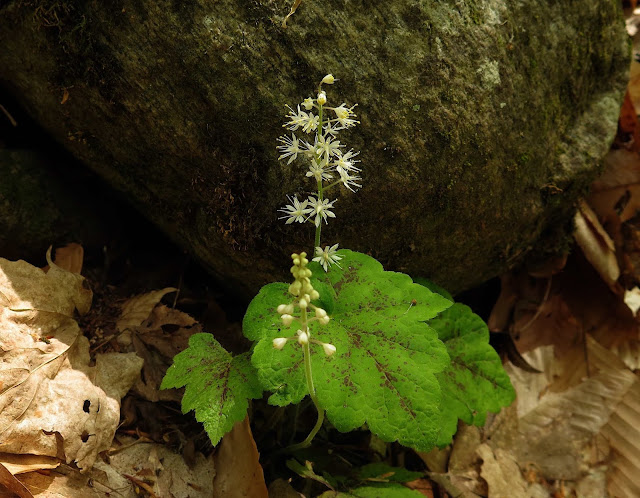



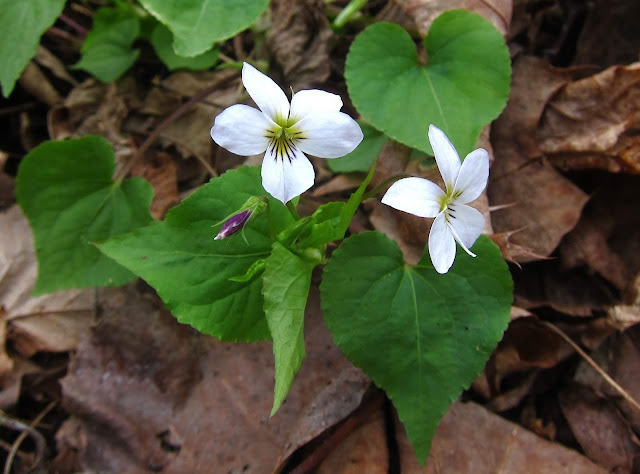



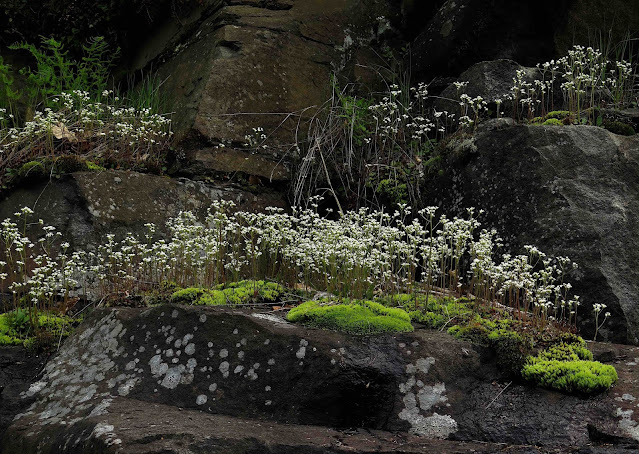



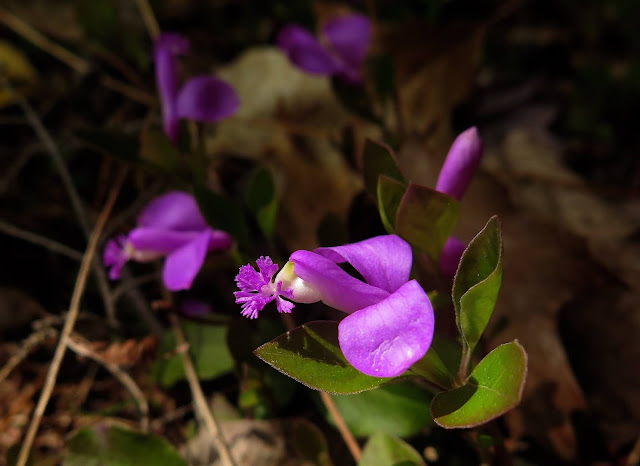
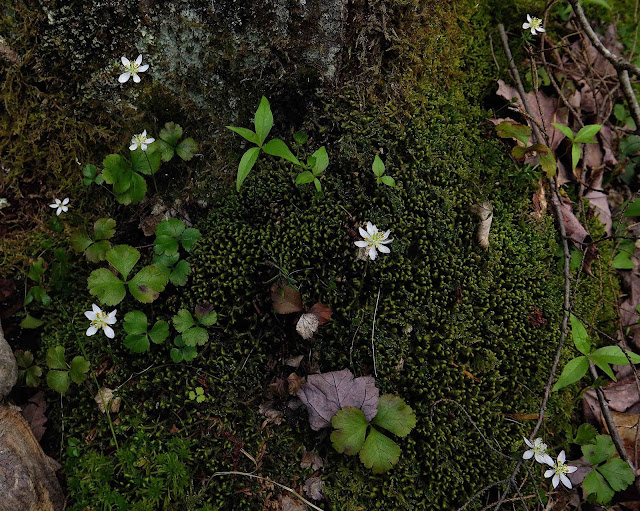

3 comments:
You have such a talent in finding and photographing such beauty. I now live in Tennessee and miss some of these plants. The pandemic has kept us out of the woods to look for such beauty here.
It all looks so familiar! Except for the Painted Trillium which I haven't seen. It's reportedly been a good year for Spring Beauty here.
Thanks, Uta Zickfeld, for stopping by to add your very kind comment. I do feel enormously grateful to live among so much natural northeastern beauty. I bet you have lots of different but similar beauty awaiting you when you can return to the woods of Tennessee.
Furry Gnome, it's always good to hear from you! Thanks for being such a loyal follower and fellow nature lover. I'm always impressed by how much you yourself do manage to get out and enjoy the natural wonders surrounding you up north.
Post a Comment